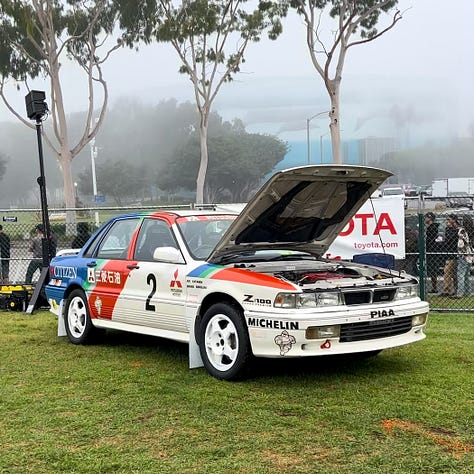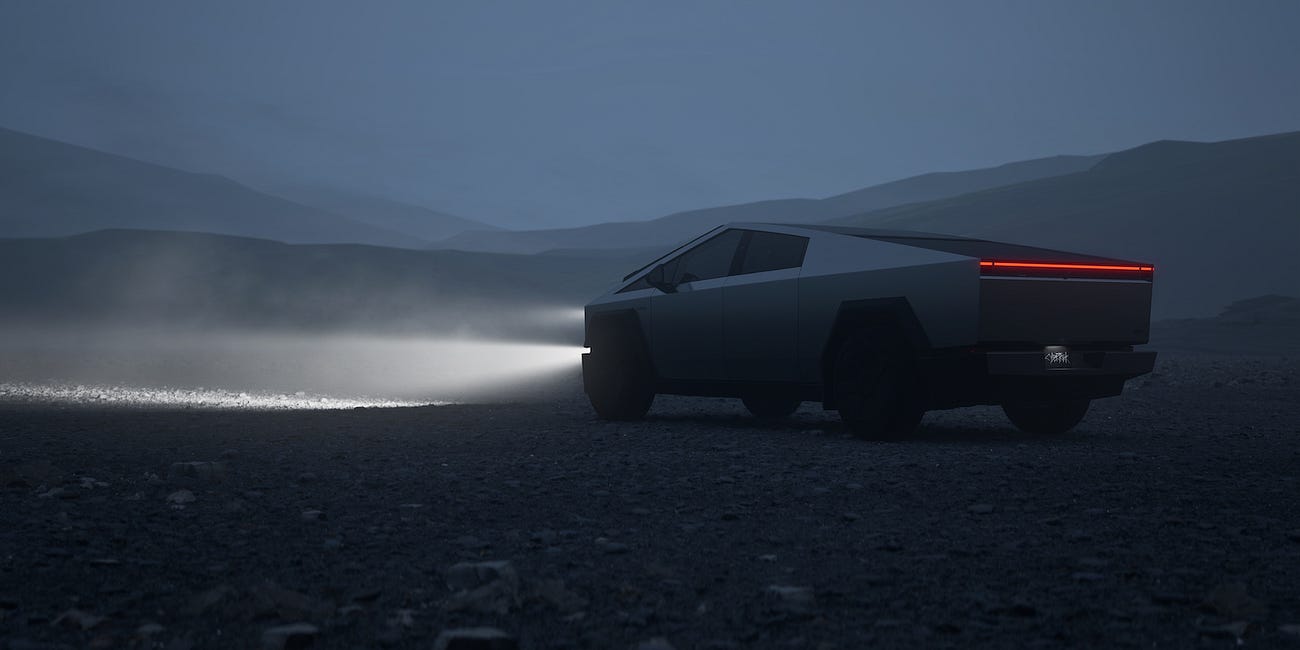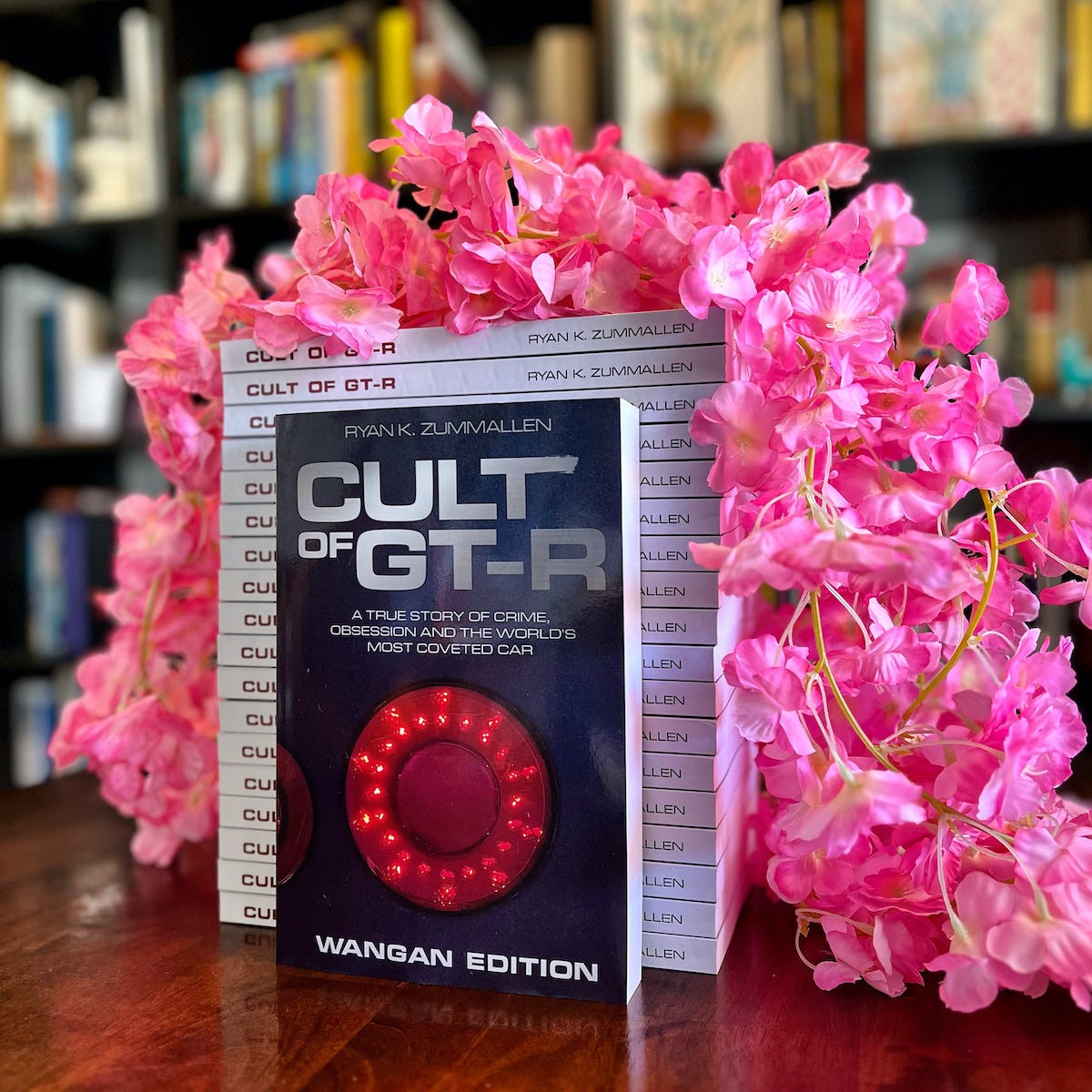Japanese Cars Get The Star Treatment
Once an afterthought, Japanese cars are revered as classics at JCCS
HAPPY RACE DAY! especially to Liberty Walk, the Japanese shop that issues mind-blowing creations every year. At the Tokyo Auto Salon in 2023, LWB unveiled an insane Ferrari F40. For 2024, they’re teasing a wild Lamborghini Countach.
God bless ‘em. The full build drops on January 12th.
News & Notes
Last week, my newsletter about the Tesla Cybertruck and journalism ethics drew lots of attention. Most of it was positive — thank you for the kind comments and messages of support. It was nice to hear people agreeing that we can do better.
Journalism Ethics and the Cybertruck
A WHILE BACK, one of my previous bosses described his personal automotive journalism philosophy to me like this: “Every car is shit. Until proven otherwise.” Personally, it’s not my favorite. I’m more fond of something like: “Comfort the afflicted; afflict the comfortable.” You know—look out for the little guy. But they both hint at something that I consider crucial. And that’s skepticism.
To be clear, I don’t begrudge any video host or automotive writer doing their best. Everyone deserves to be proud of their work.
But we all have the responsibility to be accountable, and hold one another accountable. As a result we get the opportunity to learn and improve.
Messing up is a part of journalism. You will report inaccuracies, or forget to ask questions, or accidentally fudge some numbers. It happens every day.
The point is the intention of doing what’s right for the reader, and striving to learn how you can do better in the future. When I got messages saying I shouldn’t have called anyone out, or that an auto journalist like me doesn’t get to throw stones, that’s an indication that the person doesn’t believe we can be better.
Of course we can be better. We can always be better. I’m not an infallible ombudsman, and I am always open to criticism, because I’m always trying to get better. I expect my colleagues to want the same. That’s how we push this industry forward.
I’ll continue pushing. Stay tuned for some big news on that topic, coming soon.
The Rise of the Japanese Classic Car Show
When the Japanese Classic Car Show first started in 2007, it was humble and small. Every summer the show occupied a small park in Long Beach, under the shadow of the Queen Mary. The cars weren’t always the highest quality.
But it was the closest thing Japanese cars had to a true tribute. People kept coming. Eventually the show had to move to a much larger area. Now it’s filled with hundreds and hundreds of cars. An estimated 10,000 people attended in October.
This show was my fourth time attending — once during a Covid-era in the parking lot at Angel Stadium, and three times at the larger Long Beach venue. Every time I’m more blown away by the numbers and the quality of the show.
There were plenty of show-stoppers. Here were my favorites:
a tribute Mitsubishi Galant VR-4 rally car;
a Honda Beat with iconic koala wheels;
a Toyota Supra modified by the legendary Japanese custom shop Top Secret.



I spoke with Ben Hsu, editor of the excellent website Japanese Nostalgic Car, about JCCS and its legacy.
“The show had a lot to contribute to the ways Japanese cars are appreciated,” Hsu told me. “To me it is the premier Japanese car show in the U.S., and probably one of the premier ones in the world outside of Japan.”
How JCCS Exploded
To learn more, I spoke with Terry Yamaguchi, CEO of JCCS. “We strive to enhance the show experience for both participants and visitors,” she told me. Here are a few factors that led to its growth:
Longevity. JCCS was founded on passion first. The core team is still comprised of only a few employees while to many attendees, it’s a pilgrimage. Winning a JCCS award now carries a tremendous amount of prestige.
Location. The west coast is home base for the Japanese car community. There are tons of nearby vehicles in excellent condition, and the enthusiasm is homegrown. People want to bring their cars out. Even more want to see them.
Curation. In the early days, any car that wanted in could roll in. Today there’s an application process. This ruffled some feathers at first, Hsu told me. But it helped catapult the public profile of JCCS and made it a social media darling.
“We had to implement a screening process,” Yamagushi said, “due to limited spots and the occasional car flipper looking to sell. Simultaneously, we wanted to ensure that the cars met a certain restoration standard—at least a decent level.”
Coming of age. People who grew up in the ‘90s are now the biggest decision makers in car culture. Playing Gran Turismo, watching The Fast & the Furious and street racing a home-built Honda Civic from the era helped build a true love for Japanese cars.
For the Culture
Shows like JCCS are popping up all over the country. Japanese cars have strong fanbases on the east coast, and the communities in both Texas and Arizona are growing fast. (The Route 66 JDM Classic is a definite one to watch.)
JCCS is still considered the top dog. Each year it dominates posts on social media, and hosted an estimated 450 cars in 2023 — even with the stricter standards.
“I’m sure they would have more if there was a bigger space,” Hsu told me.
There is a lot of competition for attention in the L.A. area. People circle JCCS on their calendars as soon as the date is announced. Today, it’s recognized for bringing out the biggest heavy hitters around. And for its contribution to the culture.
“People would say a Japanese car could never become classic — they were seen as disposable,” Hsu said. “Nowadays, you see people appreciating them as classics.”
And Finally…
I’m happy to announce that we’re hosting a book signing and release event at Autobooks-Aerobooks in Burbank, Calif. on Saturday, January 13th.
I’ll be there with copies of Cult of GT-R after our hugely successful launch and rollout last month. I’m especially happy to be back at Autobooks after a fun event for Slow Car Fast in 2020. Stay tuned for more news — I’ve got some fun stuff planned.
If you enjoyed this issue, please consider sharing it with your friends.
Drive hard and be safe. Black Lives Matter.
Race Day has subscribers in 33 states and 18 countries! Want your event included? Shoot me a note with subject line “Race Day” at ryan@carrarabooks.com.
Check out Carrara Media on Instagram, Twitter and Facebook and visit our store to order one of our many fine books and eBooks.








